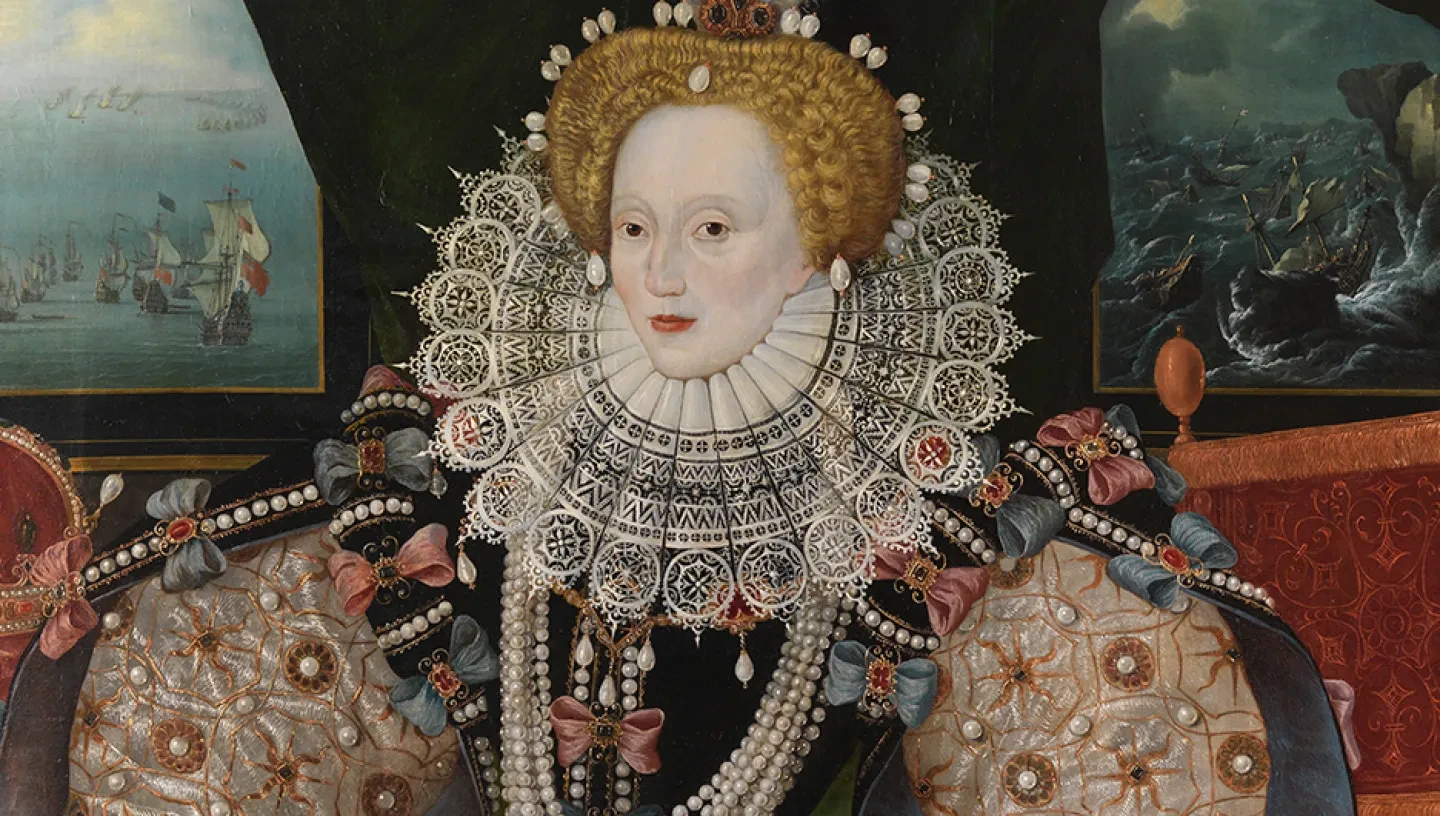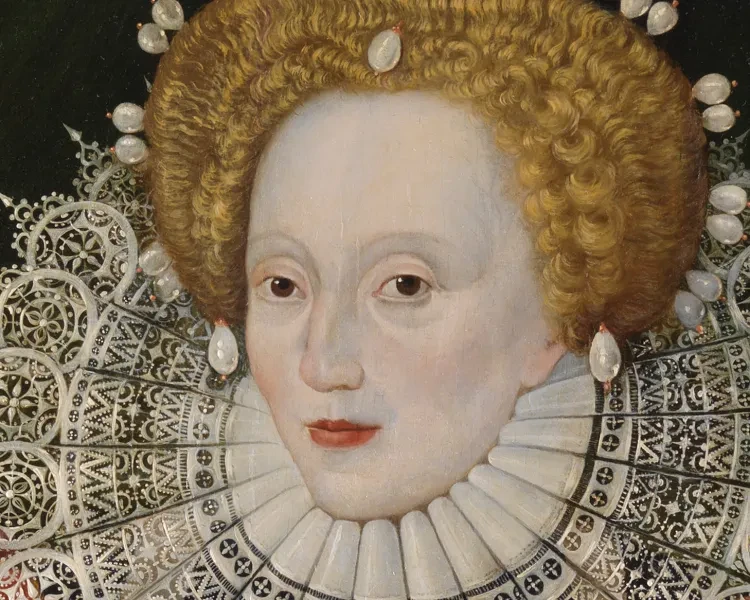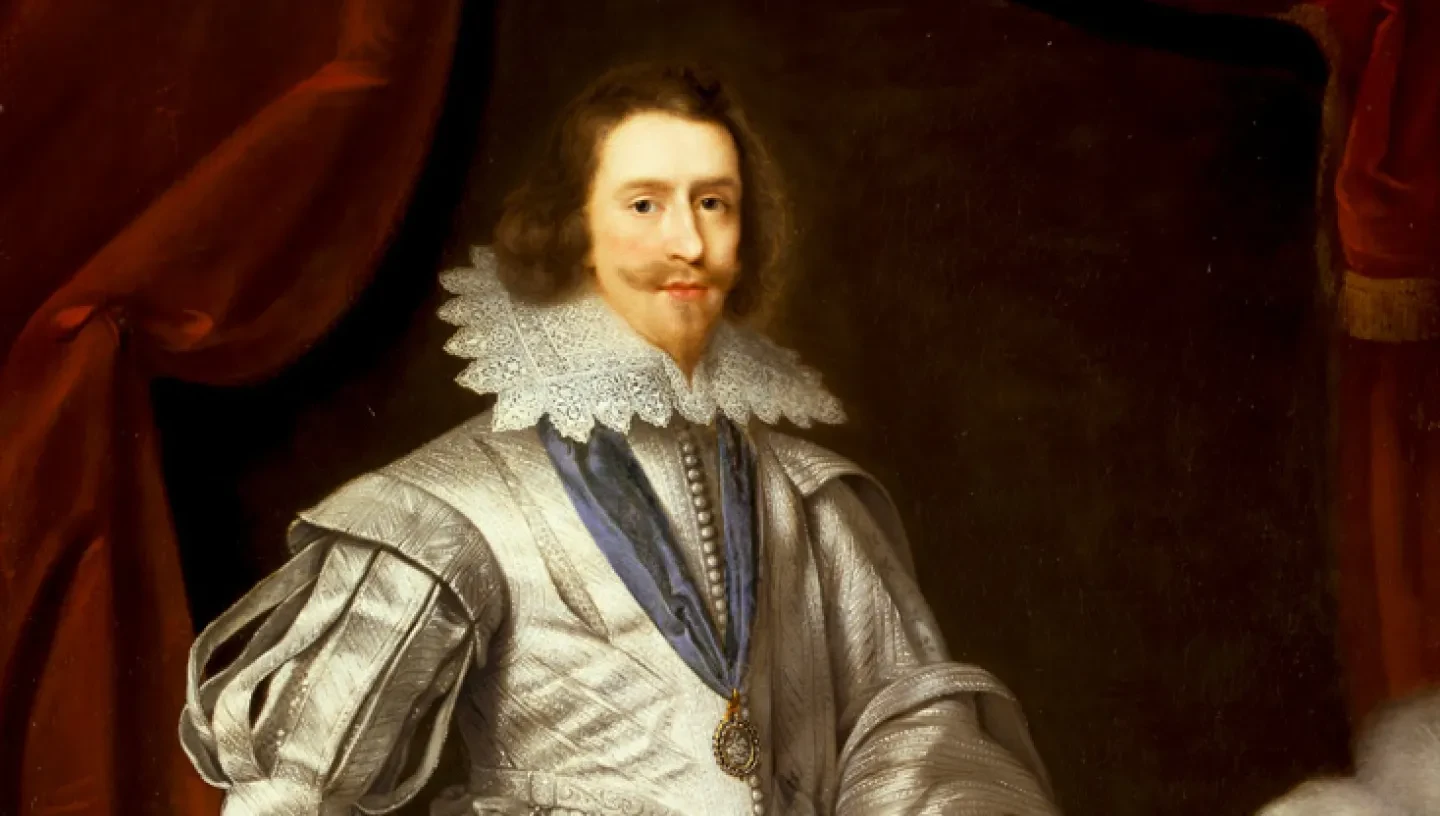
A story of social climbing, scandal and speculation: the rise of George Villiers, 1st Duke of Buckingham – and his relationship with King James I – has long been the subject of intrigue.
Born in Leicestershire in 1592, Villiers worked his way up into the upper echelons of Stuart society, becoming a powerful figure in matters of state and royal affairs. However, his success in winning the King’s favour raised concerns among courtiers and members of Parliament.
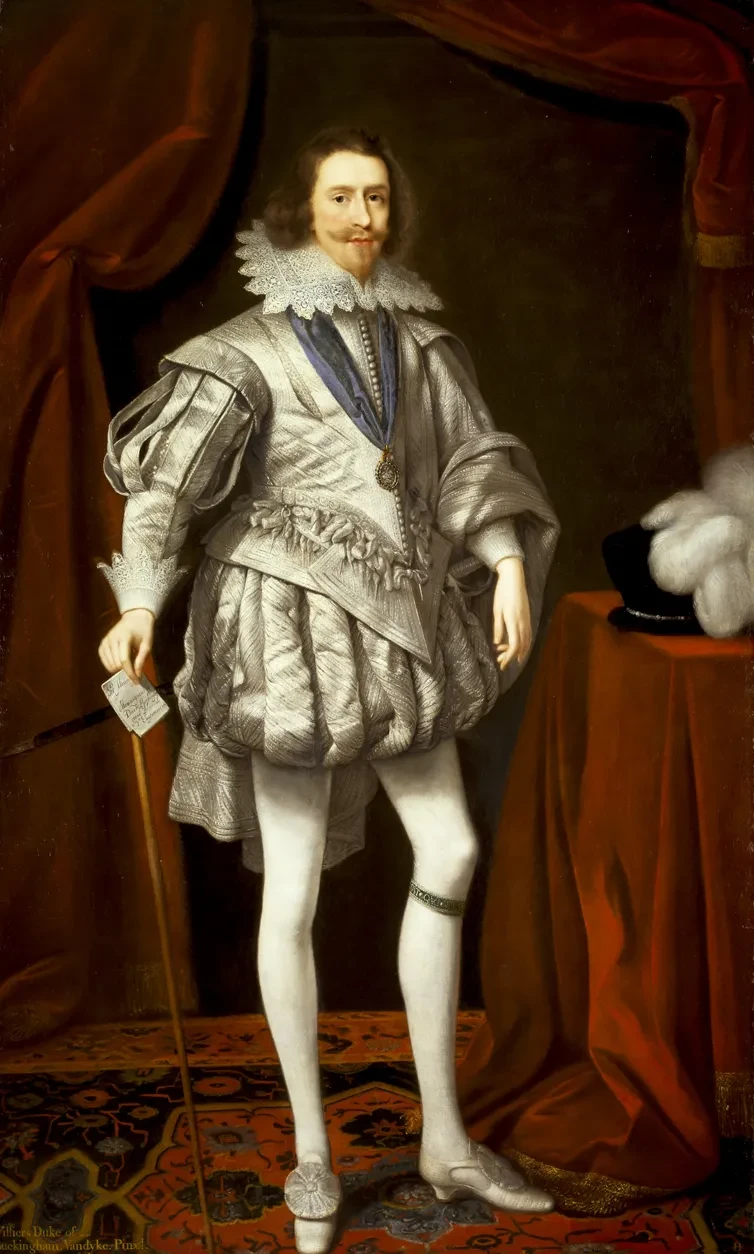
A full-length portrait of George Villiers by the studio of Daniel Mytens the Elder is now on display in the Queen’s House. Hung in close proximity to a portrait of James, the work shows Villiers dressed in white, wearing the Order of the Garter.
But what was behind Villiers’ ascent to fame – and what was the nature of his relationship with the King? Literary historian Dr Max Riviera gives an insight into the politics of the Stuart court.
Rising through the ranks
James I and his future favourite briefly met for the first time in 1614 during a hunt in Apethorpe – a royal residence in Northamptonshire. George Villiers’ social and political rise began on Saint George’s Day in 1615.
On that day, Queen Anne of Denmark (probably manoeuvred by the Archbishop of Canterbury as part of a larger plan to get rid of Robert Carr, the King’s current favourite) marched into her husband’s bedroom, asking him to name the 22-year-old Villiers a Gentleman of the Bedchamber in the Royal Household.
The plan worked all too well: Carr’s involvement in the murder of courtier and author Sir Thomas Overbury led to his banishment from court and the King’s bosom. Villiers ended up being not “a meteor”, as statesman Francis Bacon had warned him, but a “stella fixa” (a fixed star) in the firmament of James’ affections.
When James appointed George Villiers Lord High Admiral in 1619, nothing in his credentials could justify this promotion to a role he was most certainly not qualified for, except for the fact that he was, in Bishop Godfrey Goodman’s words, “the handsomest-bodied man in all of England”.
Before then, James had already made him a member of the Order of the Garter and Viscount Villiers in 1616, Earl of Buckingham and Member of the Privy Council in 1617, and a Marquis in 1618. When James created him Duke of Buckingham in 1623, Villiers became the highest-ranking aristocrat in England who could not boast royal blood.
Discover more great art
Sign up to the art newsletter for more information about Royal Museums Greenwich's art collection, and learn about upcoming exhibitions and events.
Relationship rumours
A plethora of contemporary witnesses – bishops, courtiers, foreign ambassadors, and more – registered the emotional and physical closeness between James and Villiers, which generated (some) rumours about the nature of their relationship.
Of course, it can be argued that resentment of Villiers’ ascent (not to mention his dubious skills as a statesman), anti-Stuart feelings in England, and anti-British sentiments abroad fuelled gossip.
The notorious remark Rex Fuit Elizabeth: Nunc Est Regina Jacobus (‘Elizabeth was King, now James is Queen’) may be tinged with scorn, but homophobia does not characterise all these reports.
When the diarist Sir John Oglander, who owed James his knighthood, wrote that the King “loved young men, his favourites, better than women, loving them beyond the love of men to women” he seems to be thinking of the biblical King David and Jonathan, whose love is described as “passing the love of women” (2 Samuel 1:26).
In early modern England “the public signs of a male friendship”, as historian Alan Bray argues, “could be read in a different and sodomitical light” and, while discourses on the topic were careful to differentiate between friendship and queerness, “signs of the one were indeed sometimes also the sign of the latter”.
Homoerotic and amical language could overlap to almost undistinguishable extents in Renaissance England, but the relationship between Villiers and the King went beyond humanistic engagement with Cicero's De Amicitia, in which masculine friendship is described as the supreme bond among people – ‘Nuptial love maketh mankind’, Bacon echoes, ‘friendly love perfecteth it’.
Indeed, some historians read Villiers’ letter fondly reminiscing of “the time which I shall never forget at Farnham, where the bed’s head could not be found between the master and his dog” as evidence of the fact that their relationship was (or had been) physical, especially since Villiers usually described himself as “your Dog” and James as “the best of masters” in his letters to the King.
Were Villiers and James lovers?
While no irrefutable proof can reveal whether they were lovers, an extraordinary emotional closeness emerges from their personal letters. Royal letters are semi-private documents at best, but James and Villiers felt nonetheless free to display some of their playful and intimate bond in the letters they sent each other, especially during the eight months Villiers spent in Spain with James’ son, Charles, Prince of Wales (the future King Charles I).
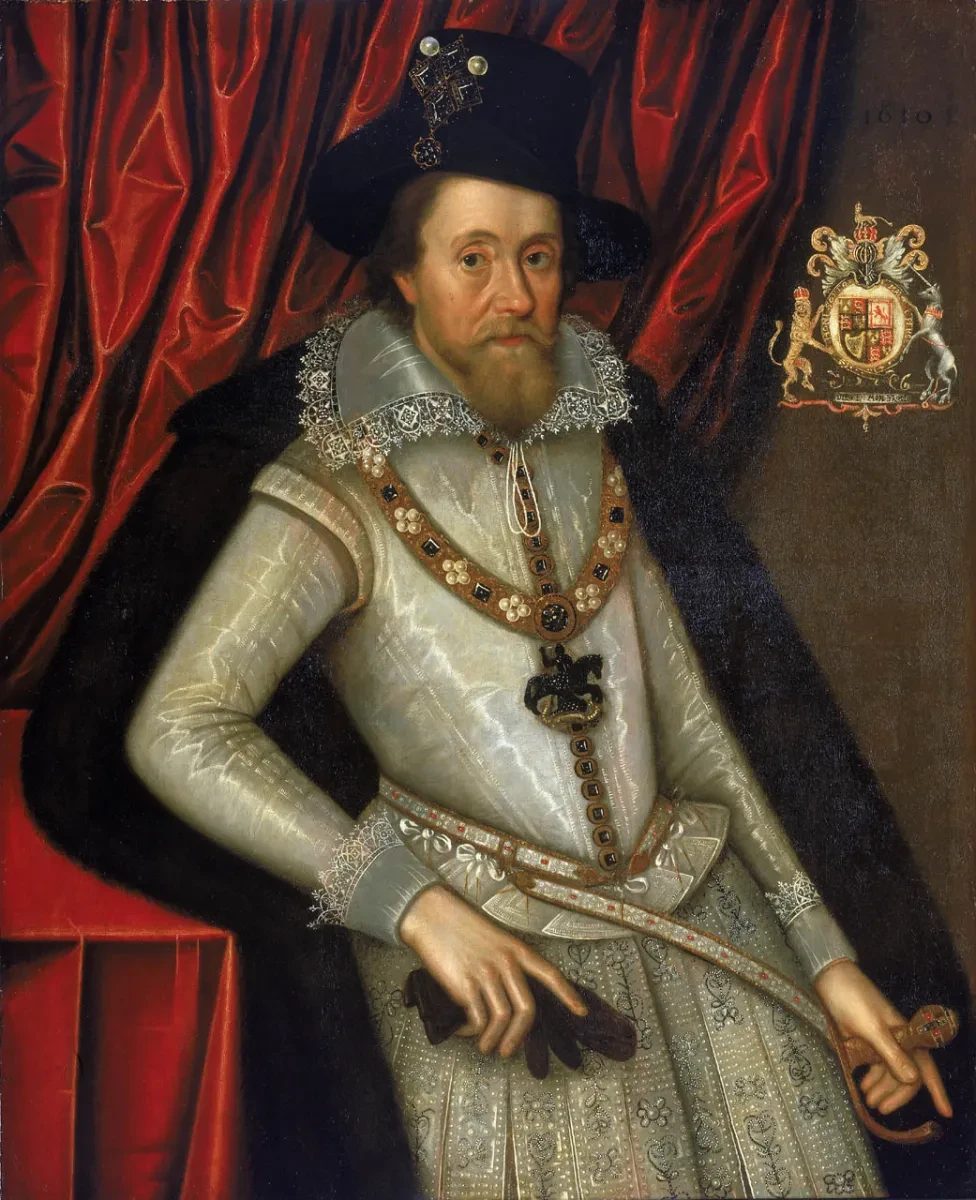
Pining for George’s return, James (pictured) wrote to him of his habit of wearing Villiers’ picture "under my waistcoat next my heart" (28 Feb. 1623), and his fear that "extreme longing will kill me" (21 Jul. 1623). In turn, Villiers would reply describing how much he enjoyed “reading over and over” the King’s “sweet cordial letters” (24 Mar. 1623), and his hope for a swift return home, since “none longed more to be in the arms of his Mistress” than he wished to return to England and lay himself at James’ feet (date unknown).
Even if they were careful not to write down anything too explicit, academic David M. Bergeron suggests that the horrified reactions of eighteenth- (and even twentieth-) century historians reveal that the letters’ homoerotic charge did not go undetected: Catharine Macaulay labelled their tone as “indecent”, Philip Yorke as “nauseous”, and Godfrey Davies as "repulsive” and even "revolting".
Deep connections
The relationship outlined in these letters is complex, as they reveal feelings that are not simply friendly or romantic, but also familial. James would usually sign himself as “thy dear dad”, and similarly Villiers would consistently address him as “Dear Dad and Gossip” (godparent).
In December 1623, the King sent Villiers a famous letter, wishing that the two of them “may make at this Christmas a new marriage ever to be kept hereafter”. “I desire only to live in this world for your sake”, James goes on, adding that he’d “rather live banished in any part of the earth with you than live a sorrowful widow’s life without you. And so God bless you, my sweet child and wife, and grant that ye may ever be a comfort to your dear dad and husband”.
Deprived of parents at an early age by the murder of his father Henry Stuart, Lord Darnley, and the imprisonment of his mother Mary, Queen of Scots, James sought kinship in men at court.
The bond with his first favourite, Esmé Stewart, twenty-four year his senior, ended in heartbreak for the teenage James after Stewart was exiled in 1582. As he grew older, James sought solace in several handsome young men – most notably Carr – but, as this multi-layered sign-off reveals, it is in Villiers that he may have found what he craved: a sense of family that not even his wife and children could satisfy.
Villiers, James and the language of sexuality
Employing modern labels to describe Renaissance sexualities can be tricky. After all, as scholar Will Tosh points out, “early modern terms denoting queer nonconformity” – such as 'Ganymede’, ‘catamite’, ‘ingle’, ‘tribade’ or even ‘sodomite’ – “weren’t precise predecessors for labels of identity such as gay, bisexual or lesbians”.
The very word ‘queer’ still generates such heated debates nowadays, that we cannot fail to appreciate how difficult it is to find a language that defines the sexuality of people who came long before us, whether they lived in Ancient Greece or Jacobean England.
In the past few decades, some authors have alternatively described James as “actively bisexual” or “homosexual”, while others, more recently Sir Noel Malcolm, have noted that (most) rumours concerning James’ sexual activity with his favourites started circulating only after his death. However, there is little doubt that Villiers was the most important person for James in the last decade of his life.
A lasting bond
The King’s favour and affection endured even after Villiers got married and had children. Villiers’ skills at keeping James entertained and swiftly dispatching potential rivals (including his own cousin Arthur Brett) did the rest.
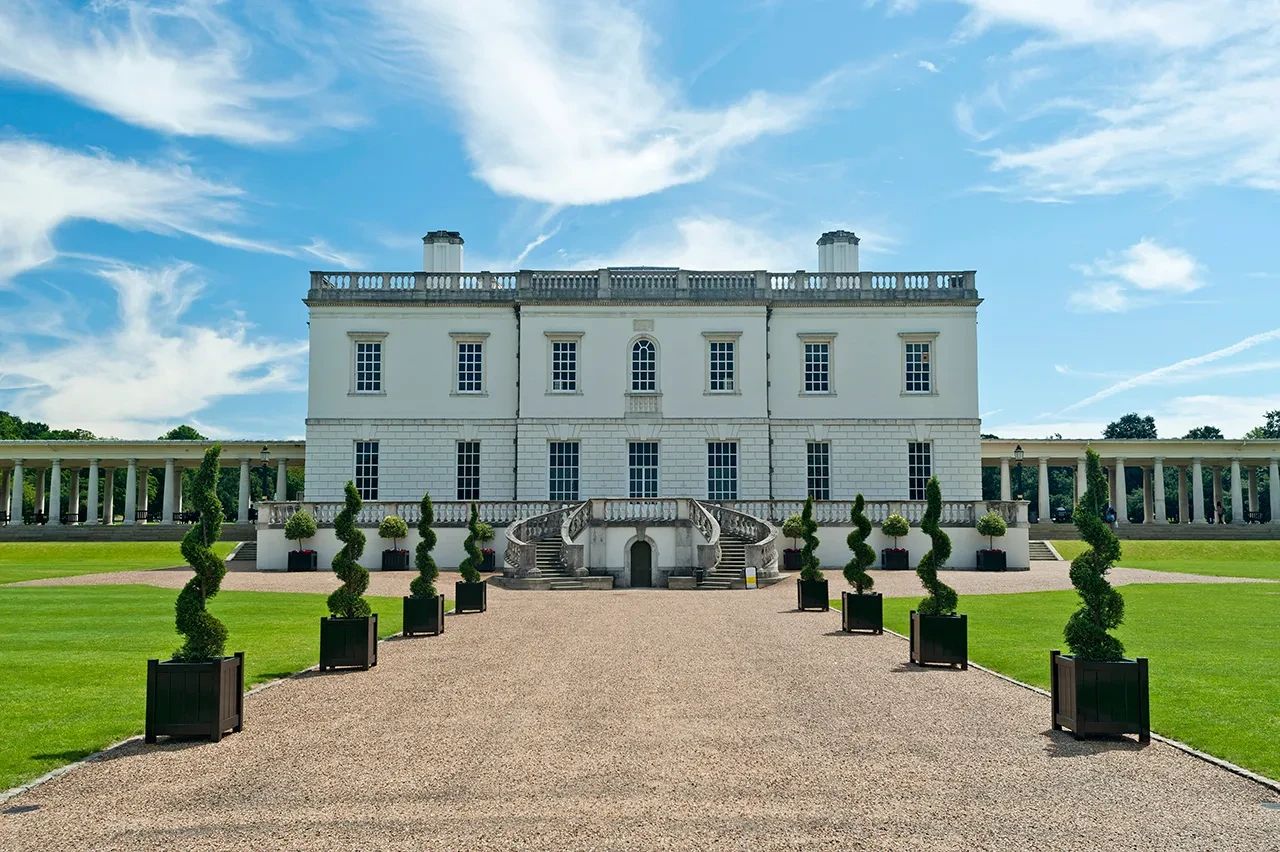
On 27 May 1624, courtier Richard Zouch noted that after Villiers had been seized by fever, “the King [took] Buckingham to Greenwich, helping him into the coach with his own hand”. Perhaps they would be pleased to know that both their portraits are now on display together at the Queen’s House.
About the author
Dr Max Riviera is a literary historian based in London and Milan. He has recently been awarded a PhD in English from University College London for his thesis on the Elizabethan poet Richard Barnfield and is working on his forthcoming book on this subject.
Further reading
Bray, Alan, ‘Homosexuality and the Signs of Male Friendship in Elizabethan England’, in Queering the Renaissance, ed. by Jonathan Goldberg (Duke University Press, 1994), pp. 40-61
Bergeron, David M., King James and Letters of Homoerotic Desire (University of Iowa Press, 2002)
Lockyer, Roger, Buckingham: The Life and Political Career of George Villiers, First Duke of Buckingham, 1592-1628 (Longman, 1981)
Malcolm, Noel, Forbidden Desire in Early Modern Europe: Male-Male Sexual Relations, 1400-1750 (Oxford University Press, 2023)
Russell, Gareth, Queen James: The Life and Loves of Britain’s First King (William Collins, 2025)
Tosh, Will, Straight Acting: The Many Queer Lives of William Shakespeare (Sceptre, 2024)
Young, Michael B., King James and the History of Homosexuality (New York University Press, 1999)
